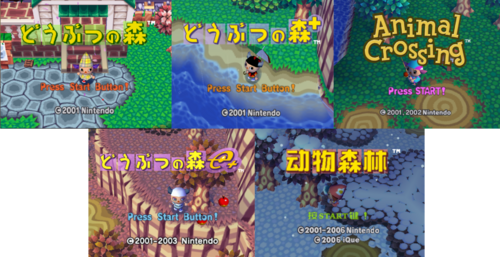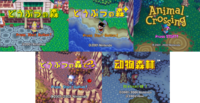First generation
The first generation of games in the Animal Crossing series refers to the first few games based on the original Doubutsu no Mori, which were released between 2001 and 2006 and all use the same game engine and share much of the same assets and gameplay.
After the release of Doubutsu no Mori on the Nintendo 64 in April 2001, the game was expanded and ported to the Nintendo GameCube in Japan as Doubutsu no Mori+ in December 2001. Doubutsu no Mori+ was then localized for Western audiences and released as Animal Crossing in North America in September 2002 and later in Australia and Europe. Animal Crossing was then re-localized back into Japanese and further expanded as Doubutsu no Mori e+ in June 2003. In June 2006, the original Doubutsu no Mori was localized for China and released on the iQue Player as Dòngwù Sēnlín five years after its initial release.
Each of the three original Japanese games (Doubutsu no Mori, Doubutsu no Mori+, and Doubutsu no Mori e+) features different content, with each version expanding on the previous one. Additionally, Animal Crossing features numerous differences from Doubutsu no Mori+ as a result of its localization to account for cultural differences, as does Dòngwù Sēnlín from Doubutsu no Mori.
Briefly, the five versions are:
- Doubutsu no Mori (2001, Nintendo 64)
- Doubutsu no Mori+ (2001, Nintendo GameCube)
- Animal Crossing (2002, Nintendo GameCube)
- Doubutsu no Mori e+ (2003, Nintendo GameCube)
- Dòngwù Sēnlín (2006, iQue Player)
Detailed overview[edit]
| Title | Platform / Release date(s) | Description |
|---|---|---|
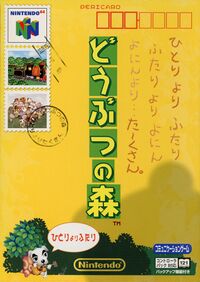 Doubutsu no Mori どうぶつの森 |
 Nintendo 64 |
The first game in the series, Doubutsu no Mori (meaning Animal Forest) released only in Japan as a Nintendo 64 cartridge with a battery-powered clock included. Originally developed as a role-playing game for the Nintendo 64DD, the game was re-visualized as an everyday life simulator in a village populated by animals, with time passing as it does in real life. Due to the constraints of the N64, the game is lacking many features familiar to the series that would be added in subsequent versions. Doubutsu no Mori was the last first-party game for the Nintendo 64. |
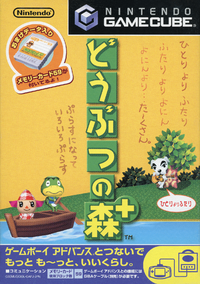 Doubutsu no Mori+ どうぶつの森+ |
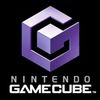 Nintendo GameCube |
Doubutsu no Mori+ (Animal Forest+) is an upgraded port and expansion of Doubutsu no Mori for the Nintendo GameCube, again released in Japan only. This and the other GameCube titles emulate N64 graphics and audio from Doubutsu no Mori, although the game code itself is not emulated. Doubutsu no Mori+ added many new characters, locations such as the museum and Able Sisters, events, items and creatures, quality of life changes, and compatibility with the Game Boy Advance for the Animal Island minigame linked to the Animal Island location in the GameCube game. Several series of e-Reader cards were released as a tie in. |
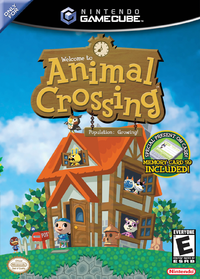 Animal Crossing |
 Nintendo GameCube |
Animal Crossing is the international version of Doubutsu no Mori+, the first to be released outside of Japan. Many Japanese cultural references in characters, events, items and dialogue were removed in favor of those familiar to Western audiences, including additional content not seen in Doubutsu no Mori+. Another notable addition was direct compatibility with the e-Reader through the GameCube – Game Boy Advance link cable, allowing for gifts to be scanned directly into the GameCube game instead of just the GBA.
Animal Crossing first released in North America in 2002, with versions in Australia and Europe releasing in 2003 and 2004 respectively. The Australian version is mostly identical to the North American version. The European version removed e-Reader support, made minor changes to events, dialog, and models/textures. It also features translations into Spanish, French, German, and Italian. |
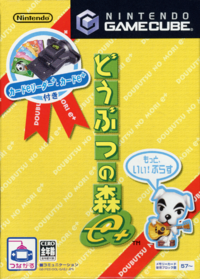 Doubutsu no Mori e+ どうぶつの森 e+ |
 Nintendo GameCube |
Doubutsu no Mori e+ (Animal Forest e+), also released for the GameCube, is a re-adaptation of Animal Crossing and its unique content back into Japanese, as well as adding even more content never seen outside of Japan. Since direct e-Reader compatibility was not a feature in Doubutsu no Mori+, the highlighted feature of e+ was the ability to scan both Doubutsu no Mori+ and new Doubutsu no Mori e+ cards into the game, to receive gifts like in Animal Crossing or more notably invite a villager directly to the player's village. This included 83 new villagers that could only be invited with their e-Reader cards, as well as 12 new K.K. Slider songs and designs. Other new features include conversations between two villagers, entering Tom Nook's store at night with a shovel or axe, the Reset Surveillance Center, Animal Island becoming a loan instead of a GBA link, and a collection of GBA minigames playable at the wishing well. |
 Dòngwù Sēnlín 动物森林 |
iQue Player |
Dòngwù Sēnlín (again meaning Animal Forest) is the final game of the first generation. It is a Chinese translation of Doubutsu no Mori ported to the iQue Player, a system released in China to play ports of Nintendo 64 games. While gameplay remains the same as Doubutsu no Mori, many Japanese items and textures were replaced, and some events were removed or changed—most notably, the Lunar New Year being celebrated. Dòngwù Sēnlín was chronologically the last first-generation game of the Animal Crossing series, although Animal Crossing: Wild World had already released the prior year. |
| First-generation Animal Crossing | ||||||||||
|---|---|---|---|---|---|---|---|---|---|---|
| ||||||||||
| Animal Crossing series | ||||||||||||||
|---|---|---|---|---|---|---|---|---|---|---|---|---|---|---|
| ||||||||||||||
